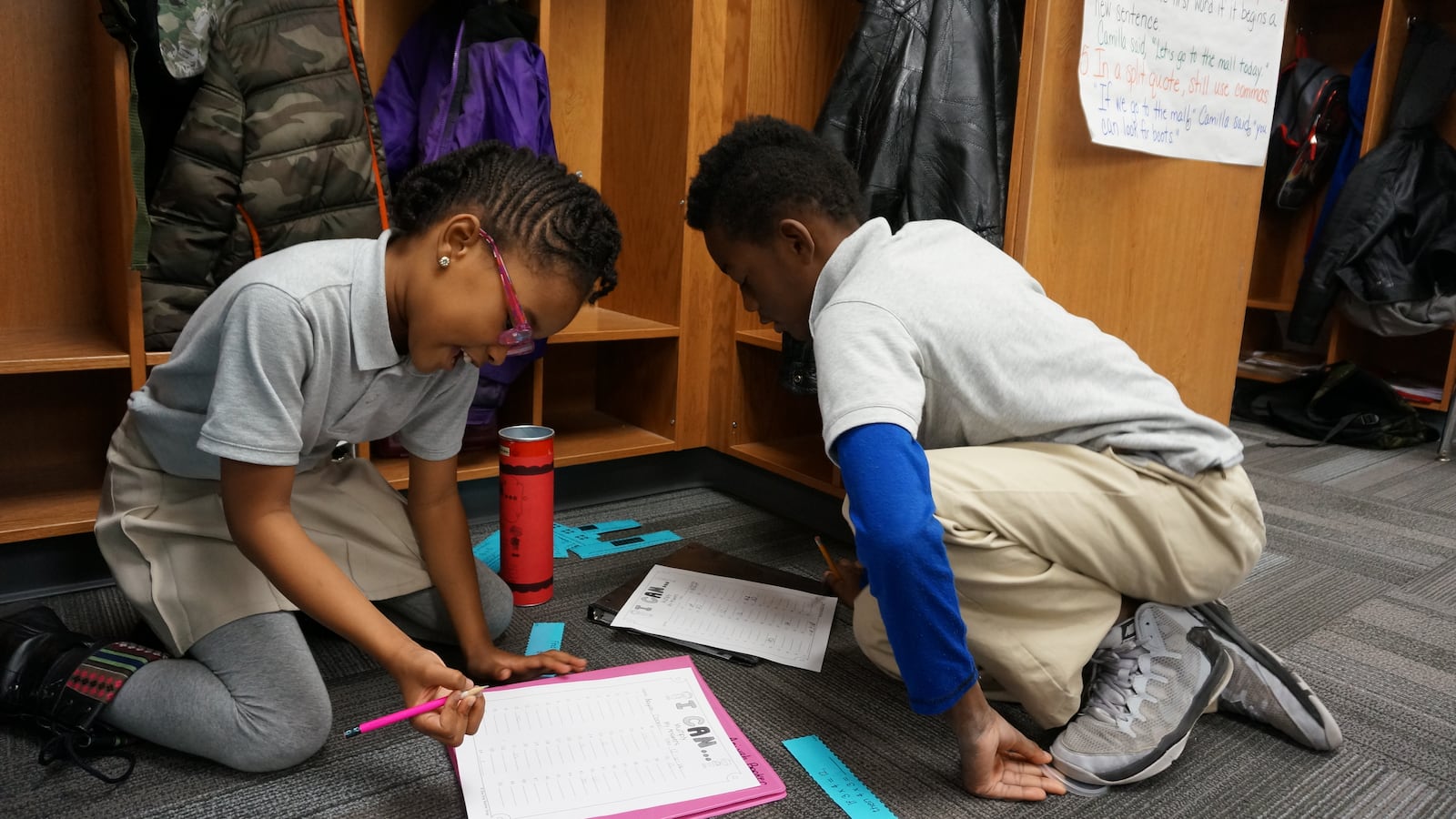When Indianapolis Public Schools “restarted” chronically struggling schools, students who stayed under the new management sometimes made smaller gains on tests compared to their classmates who left, a new study finds.
Over time, however, students at the restarted schools closed some of the gaps.
The study by Public Impact, an education consulting group based in North Carolina, honed in on four elementary schools where IPS contracts with outside or charter operators as a turnaround strategy. It compared students who stayed through the overhauls to those who transferred to other schools.
Results were so mixed and the data set so limited that the study couldn’t draw clear conclusions about whether the IPS innovation schools they looked at “deliver on their promise.”
“We think it’s the right question to be asking, but we didn’t draw any strong conclusions based on the analysis because the data was so small,” said Daniela Doyle, vice president for policy and management research at Public Impact and the study’s co-author.
But researchers took early enrollment and test score growth, a measure of how much students learn in a year compared to their peers, as signs that interventions could be working and lead to more significant progress over time.
Restarting schools brought leadership and curriculum changes. The teaching staff often turned over almost completely. And while dramatic interventions sometimes sparked community pushback, the overhauls generally didn’t lead to students leaving in numbers greater than the typical annual turnover, the study found. Plus, student retention rates increased over time. The demographics of the schools largely remained the same, which the study took as an indicator that they still served students from the same neighborhoods.
But in the first years of a “restart,” students who stayed at Phalen Leadership Academies at School 103 and Ignite Achievement Academy made smaller gains in math and English than those who left, the study said.
At Global Preparatory Academy at School 44, students who stayed showed more improvements in English but fell behind in math. At Kindezi Academy, the results were the opposite.
But at two of the schools, students who stayed for two or more years saw more growth than those who left, particularly in math and particularly at Phalen, the longest-running innovation restart school.
“If PLA @ 103 can sustain these gains and other restarts can replicate them, they would provide strong evidence to support the restart model’s efficacy in IPS,” the report said.
Other recent data dives that included all Indianapolis innovation and charter schools have found that students at those schools showed more improvement on tests than their peers at traditional district schools.
Indianapolis Public Schools will soon have to review the performance of its first innovation schools, which launched in 2015. Next year, district officials will evaluate Phalen’s progress at School 103 in deciding whether to renew the innovation contract.
Innovation advocates have taken test score growth as a promising sign of improvement, though School 103 struggled significantly this year as passing rates tumbled across the state on the new ILEARN exam. Overall, innovation restart schools continue to post some of the lowest passing rates in the district.
Michelle McConnico, a spokeswoman for Phalen Leadership Academies, said the network had not yet reviewed the study but was proud of the gains made in student growth.
“So often in turnaround the impact goes far beyond what is able to be documented in testing,” she added in an emailed statement. “… [T]urnaround is about giving children and families options and opportunities to stay in the schools in their communities and still receive a quality education.”
The Public Impact study, which was funded by the Walton Family Foundation, also weighed the effects of the innovation changes by looking at the costs. (Walton also supports Chalkbeat. Learn more about our funding here.)
In addition to the money that goes to innovation schools through their contracts and extra dollars for intervention at struggling schools, the study notes that innovation schools get significant support from private funders, who may provide such services as consulting. That support can be difficult to track because the dollars don’t go through the district.
However, the district also uses about $500,000 in philanthropic funds each year to cover the salaries and benefits of four district staffers who work on innovation school partnerships. “The district plans to absorb these costs eventually, though it is not clear when,” the study said.
According to the district, those dollars come from grants from three groups that back the portfolio model of school governance: the Laura and John Arnold Foundation, the Walton Family Foundation, and the City Fund.

